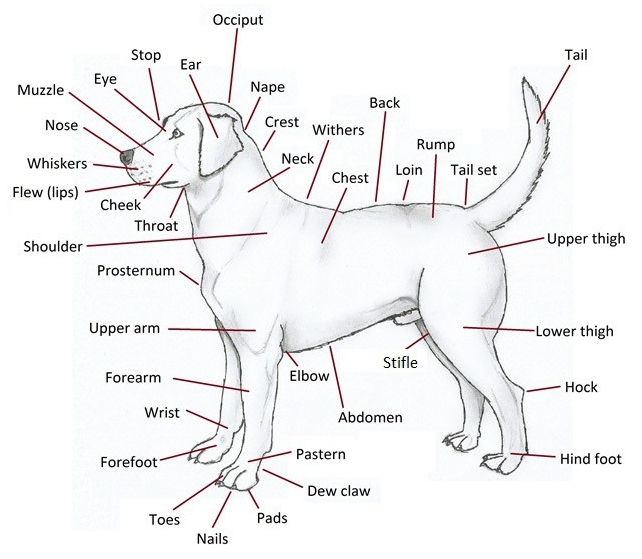

Purpose
The domestic dog is one of the most commonly owned, and widely
utilized, animals in today’s society. This paper provides an overview of research
that has explored the relationship between the domestic dog and human wellbeing.
Methods.
The article initially concentrates on the value of dogs for physical health in
humans, exploring the evidence that this species can prevent us from becoming ill,
facilitate our recovery from ill-health, and even serve as an early warning system for
certain types of underlying ailment including cancer, oncoming seizures and
hypoglycaemia. The paper then examines the relationship between dogs and
psychological health in humans, exploring the ability of this species to aid the disabled
and serve as a therapist to those in institutional settings such as hospitals, residential
homes and prisons. Weaknesses in the existing research in this area are highlighted
throughout the article.
Dogs and physical health
The notion that ‘pets are good for us’ is by no means a new one, but it is only relatively
recently that any scientific attention has been devoted to the relationship between
companion animals and physical well-being in humans. While not without its
methodological weaknesses or criticisms, this research has shown that the domestic dog
may be able to prevent us becoming ill, facilitate our recovery from ill-health and
predict certain types of underlying ailment.

Dogs as predictors of ill-health
Recently, researchers have become interested in exploring whether dogs might be able
to serve as early warning systems for certain types of physical ailment in humans, for
example cancer, epilepsy and diabetes.
Cancer detection
In 1989, Williams and Pembroke reported a case in the Lancet of a border
collie/Doberman pinscher crossbreed sniffing repeatedly at a mole on its owner’s leg;
the lesion later turned out to be malignant. Similar anecdotal reports have since
appeared in newspapers (Dobson, 2003; Fraser, 2002) and scientific journals (Church &
Williams, 2001)
Hypoglycaemia detection
There is now some evidence to suggest that dogs may be able to detect hypoglycaemia, a
common and hazardous complication of diabetes. Lim and associates (1992), for
example, indicated that over one-third of dogs living with diabetic owners have been
reported to show changes in their behaviour during their owners’ hypoglycaemic
episodes. Dogs may even be able to warn owners of impending hypoglycaemia before
symptoms are noticed by those whose awareness of the condition is mostly intact (Chen
et al., 2000).
While it is unclear exactly how dogs may be able to detect hypoglycaemia, odour
cues have been proposed as the most plausible explanation (Chen et al., 2000). One
dog, for example, was reported to exhibit hypoglycaemia-alert behaviour when its
owner was asleep and presumably emitting no cues other than olfactory ones. Increases
in sweating have been repeatedly noted in hypoglycaemic individuals (for review see
McAulay, Deary, & Frier, 2001); it is likely that dogs can detect these changes in the
chemical composition of their owners’ sweat using their acute sense of smell. Research
is now required to determine whether dogs can be trained to alert their owners onset of hypoglycaemia in the same way that they can be trained to anticipate oncoming
seizures or sniff out cancer.
Dogs and psychological health
Dogs may not only be able to facilitate certain aspects of physiological health in humans,
they may also contribute towards the psychological well-being of people. Over the
years, research has shown that animals, and in particular dogs, can ameliorate the effects
of potentially stressful life-events (e.g. bereavement, divorce), reduce levels of anxiety,
loneliness and depression (Folse, Minder, Aycock, & Santana, 1994; Garrity, Stallones,
Marx, & Johnson, 1989) and enhance feelings of autonomy, competence and self-esteem
(Beck & Katcher, 1983; Kidd & Kidd, 1985; Levinson, 1972; Robin & ten Bensel, 1985;
Triebenbacher, 1998). Many of these psychological benefits may arise directly from the
companionship that dogs offer people (see Hart, 1995 for review). Their greeting rituals,
naturally affectionate disposition, loyalty and widely perceived ability to love
unconditionally may all serve to promote feelings of self-worth and self-esteem.
Dog parts of body

Characteristics
1. Physical characteristics
a. Size and Shape
- Varied size: Ranges from tiny breeds like the Chihuahua (1.5–3 kg) to large ones like the Great Dane (up to 90 kg).
- Body shapes: Adapted for different purposes—greyhounds have slender builds for speed, bulldogs have muscular builds for strength.
b. Coat
- Types: Smooth, long, short, curly, wiry, or double coats.
- Colors: Wide variety including black, white, brown, brindle, merle, and more.
- Shedding: Varies by breed (e.g., Huskies shed heavily, Poodles are low-shedding).
c. Senses
- Smell: Exceptionally powerful—dogs have up to 300 million olfactory receptors (humans have about 5 million).
- Hearing: Can hear higher frequencies (up to 65,000 Hz) than humans (up to 20,000 Hz).
- Vision: Not completely color-blind, but see in shades of blue and yellow. Better night vision due to more rods in the retina.
- Taste: Less developed sense of taste—about 1,700 taste buds (humans have 9,000).
2. Behavioral Characteristics
a. Social Nature
- Pack animals: Prefer living in groups, exhibit social hierarchies.
- Human bonding: Strong ability to bond with humans, understand human emotions and cues.
b. Intelligence
- Learning ability: Can learn commands, solve problems, and perform tasks (some breeds are more trainable than others, e.g., Border Collie, Poodle).
- Communication: Use barks, whines, growls, body language, and facial expressions.
c. Instincts
- Herding: Seen in breeds like Border Collies.
- Hunting: Scent hounds (e.g., Beagles) and sight hounds (e.g., Greyhounds).
- Guarding: Natural protectiveness in breeds like Rottweilers or Dobermans.
- Retrieving: Strong in Labradors and Golden Retrievers.
3. Emotional and Psychological Traits
a. Loyalty
- Dogs are renowned for their loyalty and attachment to their owners.
b. Empathy
- Some dogs can detect human emotions such as sadness, anxiety, or joy.
c. Anxiety and Stress
- Can suffer from separation anxiety or stress due to changes in routine or environment.
d. Playfulness
- Most dogs retain juvenile behaviors (neoteny) into adulthood—playing, chewing, etc.
4. Health Characteristics
a. Lifespan
- Varies by breed; smaller breeds typically live longer (12–16 years) than larger breeds (8–12 years).
b. Common Health Issues
- Genetic disorders: Hip dysplasia (e.g., German Shepherds), brachycephalic syndrome (e.g., Pugs).
- Dental disease, obesity, and skin conditions are also common.
c. Vaccination and Care
- Require regular vaccinations, deworming, grooming, and exercise.
5. Reproductive Characteristics
- Gestation period: ~58–68 days.
- Litter size: Usually 4–8 puppies, varies by breed.
- Sexual maturity: Around 6–12 months of age.
- Spaying/neutering: Common practice to reduce overpopulation and health risks.
6. Domestication and History
- Domesticated over 15,000 years ago from wolves.
- Selectively bred for tasks: guarding, herding, hunting, companionship.
- First animal species domesticated by humans.


